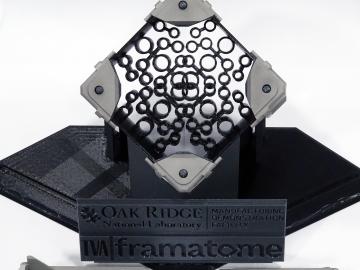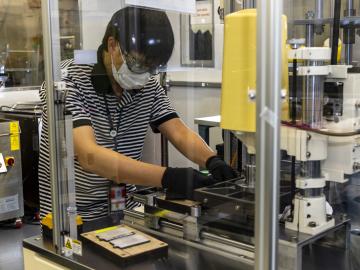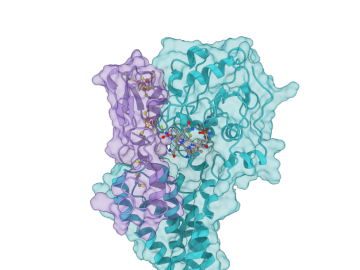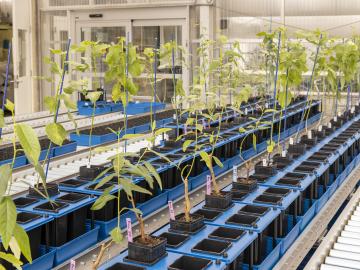
Filter News
Area of Research
- (-) Energy Science (50)
- Advanced Manufacturing (1)
- Biological Systems (1)
- Biology and Environment (52)
- Biology and Soft Matter (1)
- Computational Biology (1)
- Computer Science (2)
- Fusion and Fission (19)
- Fusion Energy (4)
- Isotopes (3)
- Materials (40)
- Materials for Computing (7)
- National Security (14)
- Neutron Science (20)
- Nuclear Science and Technology (17)
- Quantum information Science (2)
- Supercomputing (77)
News Topics
- (-) Bioenergy (10)
- (-) Composites (2)
- (-) Computer Science (7)
- (-) Materials Science (4)
- (-) Nuclear Energy (2)
- (-) Summit (2)
- (-) Transportation (17)
- 3-D Printing/Advanced Manufacturing (22)
- Advanced Reactors (2)
- Artificial Intelligence (2)
- Biology (4)
- Biomedical (2)
- Biotechnology (1)
- Buildings (11)
- Chemical Sciences (3)
- Clean Water (3)
- Coronavirus (5)
- Cybersecurity (5)
- Energy Storage (20)
- Environment (18)
- Fossil Energy (1)
- Grid (13)
- High-Performance Computing (2)
- Hydropower (1)
- Materials (5)
- Mathematics (1)
- Mercury (1)
- Microelectronics (1)
- Microscopy (2)
- Nanotechnology (2)
- National Security (1)
- Neutron Science (2)
- Partnerships (4)
- Polymers (1)
- Quantum Science (1)
- Security (3)
- Simulation (1)
- Space Exploration (1)
Media Contacts

The Transformational Challenge Reactor, or TCR, a microreactor built using 3D printing and other new advanced technologies, could be operational by 2024.

Soteria Battery Innovation Group has exclusively licensed and optioned a technology developed by Oak Ridge National Laboratory designed to eliminate thermal runaway in lithium ion batteries due to mechanical damage.

Scientists at Oak Ridge National Laboratory used new techniques to create a composite that increases the electrical current capacity of copper wires, providing a new material that can be scaled for use in ultra-efficient, power-dense electric vehicle traction motors.

A team led by ORNL created a computational model of the proteins responsible for the transformation of mercury to toxic methylmercury, marking a step forward in understanding how the reaction occurs and how mercury cycles through the environment.

Scientists at the Department of Energy’s Oak Ridge National Laboratory have a powerful new tool in the quest to produce better plants for biofuels, bioproducts and agriculture.

ORNL researchers have developed an intelligent power electronic inverter platform that can connect locally sited energy resources such as solar panels, energy storage and electric vehicles and smoothly interact with the utility power grid.

Ada Sedova’s journey to Oak Ridge National Laboratory has taken her on the path from pre-med studies in college to an accelerated graduate career in mathematics and biophysics and now to the intersection of computational science and biology

Researchers at the Department of Energy’s Oak Ridge National Laboratory (ORNL) in late February demonstrated a 20-kilowatt bi-directional wireless charging system installed on a UPS medium-duty, plug-in hybrid electric delivery truck.

Scientists at the Department of Energy’s Oak Ridge National Laboratory have developed a new method to peer deep into the nanostructure of biomaterials without damaging the sample. This novel technique can confirm structural features in starch, a carbohydrate important in biofuel production.

Each year, approximately 6 billion gallons of fuel are wasted as vehicles wait at stop lights or sit in dense traffic with engines idling, according to US Department of Energy estimates.


